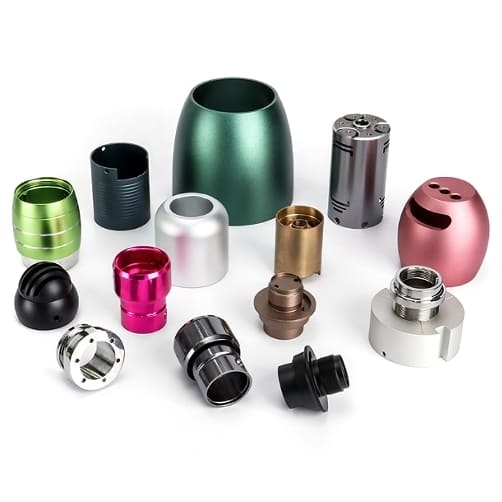
Material testing is a vital process in various industries to ensure the safety, reliability, and quality of products. Whether it’s for construction, machinery, or consumer goods, material testing helps us understand how materials perform under different conditions. In this article, we’ll explore what material testing is, its importance, types of tests, and the challenges and benefits it brings.
What is Material Testing?
Material testing is the scientific process of evaluating a material’s properties and behavior under different conditions. These tests examine mechanical, physical, chemical, and thermal properties, helping us understand how a material will perform in its intended use.
Why Material Testing is Essential:
- Quality Assurance: Ensures materials meet necessary standards.
- Performance Prediction: Helps predict how materials will behave under real-world conditions.
- Safety: Identifies weaknesses that could lead to failures.
- Cost Efficiency: Prevents the use of substandard materials, reducing future expenses.
Why is Material Testing Important in Manufacturing?
Material testing plays a key role in manufacturing, particularly in quality control. Here’s why:
- Reliability: Ensures the product performs as expected.
- Customer Satisfaction: High-quality materials result in better products and stronger brand reputation.
- Compliance: Adheres to strict industry standards.
- Innovation: Paves the way for new, more efficient products.
- Cost Management: Helps choose materials that are both cost-effective and suitable for the application.
Types of Material Testing
1. Tensile Testing
Tensile testing, also known as tension testing, is one of the most common types of material testing. It measures the tensile strength of a material, which is its ability to withstand a pulling force without breaking. During this test, a sample of the material is stretched until it breaks, and the force required to cause this failure is recorded.
Key Parameters in Tensile Testing
- Tensile Strength: The maximum stress the material can withstand before breaking.
- Elongation: The amount the material stretches before breaking.
- Modulus of Elasticity: The material’s stiffness, measured as the ratio of stress to strain.
| Material | Tensile Strength (MPa) | Elongation (%) | Modulus of Elasticity (GPa) |
|---|---|---|---|
| Steel | 400 – 800 | 15 – 30 | 200 – 210 |
| Aluminum | 90 – 270 | 5 – 15 | 69 – 79 |
| Carbon Fiber | 3500 – 7000 | 1 – 2 | 230 – 410 |
| Rubber | 10 – 40 | 100 – 700 | 0.01 – 0.1 |
2. Compression Testing
Compression testing is used to determine how materials behave under compressive loads, which are forces that push the material inward. This test is crucial for materials that will be subjected to crushing or squashing in their applications, such as concrete, ceramics, and plastics.
Key Parameters in Compression Testing
- Compressive Strength: The maximum stress a material can withstand before it fails under compression.
- Strain at Failure: The amount the material deforms before it fails.
| Material | Compressive Strength (MPa) | Strain at Failure (%) |
|---|---|---|
| Concrete | 20 – 40 | 0.1 – 0.3 |
| Ceramic | 300 – 700 | 0.05 – 0.2 |
| Plastic | 50 – 100 | 1 – 10 |
3. Impact Testing
Impact testing evaluates a material’s ability to absorb energy and resist sudden, high-force impacts. This is particularly important for materials used in safety-critical applications, such as automotive parts, protective gear, and building materials.
Types of Impact Tests
- Charpy Impact Test: Uses a pendulum to strike a notched sample.
- Izod Impact Test: Similar to the Charpy test but uses a different sample configuration.
4. Hardness Testing
Hardness testing measures a material’s resistance to indentation or scratching. This is important for applications where wear and tear are a concern, such as tools, machinery, and coatings.
Common Hardness Scales
- Rockwell Hardness: Measures the depth of indentation under a load.
- Vickers Hardness: Uses a diamond indenter to create a small, precisely measured impression.
- Brinell Hardness: Uses a steel or tungsten carbide ball to indent the material.
| Material | Rockwell Hardness (HRB) | Vickers Hardness (HV) | Brinell Hardness (BHN) |
|---|---|---|---|
| Steel | 60 – 80 | 400 – 700 | 200 – 450 |
| Aluminum | 15 – 30 | 60 – 150 | 60 – 100 |
| Diamond | N/A | 10,000 | N/A |
5. Fatigue Testing
Fatigue testing assesses a material’s ability to withstand repeated loading and unloading cycles without failing. This is crucial for materials used in dynamic environments, such as aircraft components, bridges, and mechanical parts.
Key Parameters in Fatigue Testing
- Fatigue Life: The number of cycles a material can withstand before failure.
- Fatigue Strength: The maximum stress a material can endure over a specified number of cycles.
| Material | Fatigue Life (cycles) | Fatigue Strength (MPa) |
|---|---|---|
| Steel | 10^6 – 10^7 | 200 – 400 |
| Aluminum | 10^5 – 10^6 | 100 – 200 |
| Titanium | 10^7 – 10^8 | 300 – 500 |
6. Friction and Wear Testing
Friction and wear testing evaluate how materials behave when they come into contact with other surfaces, especially under dynamic conditions. This is important for materials used in bearings, gears, and other moving parts.
Key Parameters in Friction and Wear Testing
- Coefficient of Friction: Measures the resistance to motion between two surfaces.
- Wear Rate: The rate at which the material loses mass due to friction.
| Material | Coefficient of Friction | Wear Rate (mg/km) |
|---|---|---|
| Steel | 0.5 – 0.8 | 0.1 – 1.0 |
| Teflon | 0.05 – 0.1 | 0.01 – 0.05 |
| Bronze | 0.3 – 0.5 | 0.2 – 1.5 |
7. Thermal Analysis
Thermal analysis tests how materials behave under different temperatures. This is crucial for materials used in environments with varying thermal conditions, such as electronics, aerospace, and automotive components.
Types of Thermal Analysis
- Differential Scanning Calorimetry (DSC): Measures the heat flow into or out of a material as it is heated or cooled.
- Thermogravimetric Analysis (TGA): Measures the change in weight of a material as it is heated.
- Dynamic Mechanical Analysis (DMA): Measures the mechanical properties of a material over a range of temperatures.
| Material | Melting Point (°C) | Glass Transition Temperature (°C) | Thermal Conductivity (W/m·K) |
|---|---|---|---|
| Steel | 1370 – 1540 | N/A | 50 – 80 |
| Aluminum | 660 | N/A | 237 |
| Glass | 1500 – 1700 | 500 – 600 | 1 – 1.5 |
| Plastic | 100 – 300 | 50 – 150 | 0.1 – 0.5 |
8. Corrosion Testing
Corrosion testing evaluates how materials degrade when exposed to environmental factors such as moisture, chemicals, and air. This is important for materials used in outdoor and industrial settings, as well as in chemical processing and marine environments.
Key Parameters in Corrosion Testing
- Corrosion Rate: The rate at which the material erodes or degrades.
- Corrosion Resistance: The material’s ability to resist corrosion.
| Material | Corrosion Rate (mm/year) | Corrosion Resistance (scale of 1-10) |
|---|---|---|
| Steel | 0.05 – 0.5 | 2 – 4 |
| Stainless Steel | 0.001 – 0.05 | 8 – 10 |
| Aluminum | 0.01 – 0.1 | 5 – 7 |
| Copper | 0.005 – 0.1 | 6 – 8 |
9. Chemical Analysis
Chemical analysis involves determining the composition of materials to ensure they meet specific chemical requirements. This is crucial for materials used in pharmaceuticals, food packaging, and other industries where purity and composition are critical.
Common Techniques in Chemical Analysis
- Spectroscopy: Uses light to determine the chemical composition of materials.
- Chromatography: Separates and identifies the components of a mixture.
- X-ray Diffraction (XRD): Determines the crystal structure of materials.
10. Non-Destructive Testing (NDT)
Non-destructive testing (NDT) is a method of evaluating materials without causing damage. This is particularly useful for inspecting structures and components that are already in use, such as pipelines, bridges, and aircraft.
Common NDT Techniques
- Ultrasonic Testing (UT): Uses high-frequency sound waves to detect flaws and measure thickness.
- Magnetic Particle Testing (MT): Uses a magnetic field to detect surface and near-surface flaws in ferromagnetic materials.
- Radiographic Testing (RT): Uses X-rays or gamma rays to detect internal flaws.
11. Destructive Testing
- Charpy Impact Test: Measures energy absorbed during impact.
- Torsion Testing: Evaluates resistance to twisting forces.
- Creep Testing: Assesses deformation under constant stress over time.
Destructive vs. Non-Destructive Testing
| Testing Type | Description | Advantages | Disadvantages |
|---|---|---|---|
| Destructive | Involves destroying the sample to evaluate properties. | Detailed information, ultimate strength. | Expensive, time-consuming, non-reusable. |
| Non-Destructive | Inspects without causing damage. | Faster, less expensive, reusable. | May not provide as detailed information. |
Standard Methods for Materials Testing
Standards ensure consistency and reliability in testing. Some key standards include:
- ASTM E8/E8M: Tension testing of metallic materials.
- ASTM C39: Compressive strength of concrete.
- ISO 17025: Requirements for testing laboratories.
- ASTM A370: Mechanical testing of steel.
Challenges in Material Testing
Despite its importance, material testing faces challenges:
- Cost: Advanced equipment can be expensive.
- Time: Some tests are time-consuming.
- Skill Requirements: Skilled technicians are essential for accurate results.
- Variability: Material properties can vary due to different factors.
Industries That Rely on Material Testing
Material testing is crucial across various industries:
- Manufacturing: Ensures component quality in machinery and products.
- Construction: Evaluates strength and durability of materials.
- Aerospace: Tests materials for extreme conditions.
- Automotive: Ensures safety and reliability of vehicle parts.
- Medical Devices: Ensures biocompatibility of medical implants.
- Consumer Goods: Tests the safety and durability of everyday products.
Conclusion
Material testing is an essential part of ensuring safety, performance, and quality in manufacturing. Through various mechanical, physical, chemical, and non-destructive methods, material testing helps ensure that the materials used in products meet the necessary standards. Though there are challenges, the benefits far outweigh them, leading to safer products and more reliable materials.
FAQs
What is the most common type of material testing?
The most common type of material testing is tensile testing, which measures a material’s ability to withstand pulling forces. This test is essential in many industries, from construction to manufacturing, to ensure that materials can handle the stresses they will experience in real-world applications.
How long does material testing typically take?
The duration of material testing varies depending on the type of test and the complexity of the material. Simple tests like tensile and hardness testing can take a few hours, while more complex tests like thermal analysis and fatigue testing can take days or even weeks.
Can material testing be automated?
Yes, many material testing processes can be automated to improve efficiency and accuracy. Automated testing equipment can perform tasks such as sample preparation, data collection, and analysis, reducing the potential for human error and increasing the speed of testing.
What are the limitations of material testing?
Material testing has several limitations, including the need for representative samples, the possibility of sample damage during testing, and the fact that some tests may not fully simulate real-world conditions. Additionally, testing can be time-consuming and costly, especially for complex materials or large-scale testing.
How do material testing standards differ between countries?
Material testing standards can vary significantly between countries, depending on local regulations and industry practices. However, many countries adhere to international standards such as those set by the International Organization for Standardization (ISO) and the American Society for Testing and Materials (ASTM) to ensure consistency and reliability.
